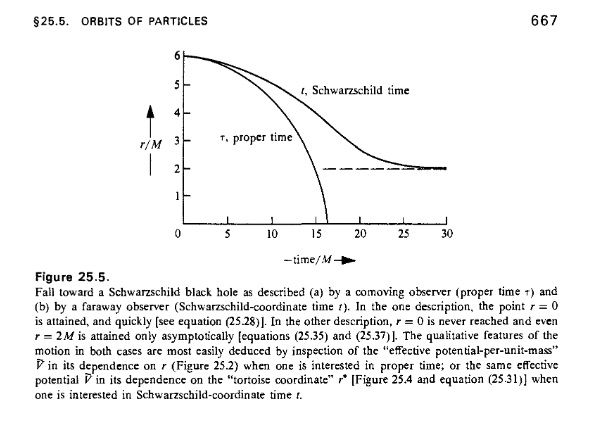Figure 25.5 of “Gravitation” – the famous bible of general relativity written in 1973 by Misner, Thorne and Wheeler – shows on page 667 two curves as a function of time, both describing an astronaut in-falling from a stationary outer point onto a black hole. The two time curves at first coincide horizontally on the left. Then the upper one decays essentially exponentially reaching the horizontal x-axis of the horizon only asymptotically after infinite time. The lower curve, after initially coinciding, deviates downwards gently to after picking up speed (in a curve like the frontal part of a shoe’s profile) reach the horizon after 15 days already.

The lower curve is the proper time experienced by an astronaut falling onto a solar-mass black hole – the time it takes on the wristwatch to reach the horizon in free fall from a fixed outer position. The upper curve shows how this same in-falling process looks to an outside observer: infinitely elongated.
I am drawing your attention to this Figure in a famous book co-authored by my late friend John Wheeler because this figure – I claim – illustrates an error made by the whole physics community over many decades – notwithstanding the fact that the Figure is flawless.
Continue reading “An Anomaly in Science” »

 Google
Google













